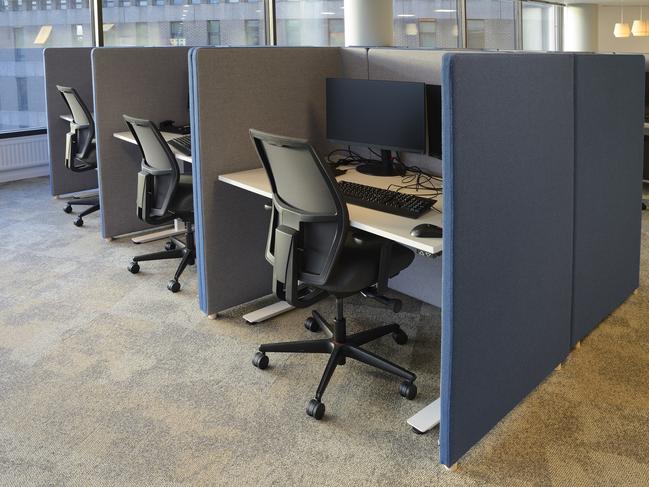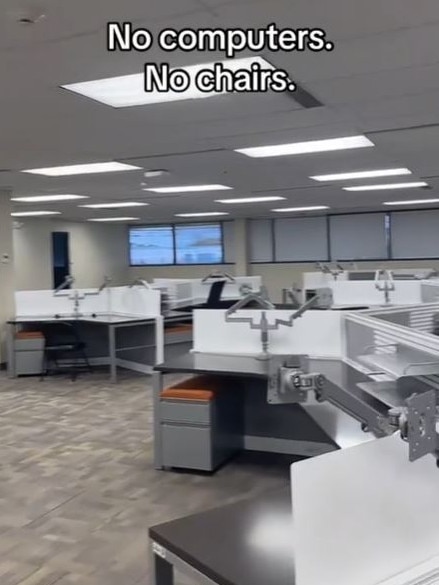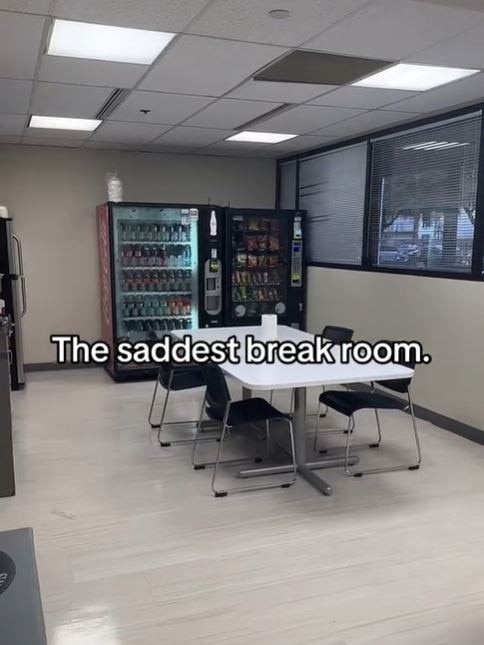‘Silver bullet’ myth driving increase in return to office mandates
Bosses have been warned that pushing ahead with return to office mandates could cause them to overlook the “real challenges” their company is facing.
Business
Don't miss out on the headlines from Business. Followed categories will be added to My News.
Return to office orders are being heralded as a way to increase collaboration and productivity, but one expert has warned they could be hiding the “real” challenges facing Australian workplaces right now.
We have seen a growing number of major businesses forcing staff back into the office, with Woolworths becoming the most recent company to roll back their working from home policy.
On Monday, the supermarket giant announced it would be ordering 10,000 employees back to the office for at least three days a week.
Last month, Coles also announced a three-day-a-week hybrid model to its staff, with Amazon, Dell, Tabcorp, and Flight Centre among other major companies recently introducing return to office mandates.
New research from leading visual collaboration platform, Lucid, has found that 91 per cent of Aussie workers surveyed find that changing hybrid work policies is negatively impacting productivity.
The data comes from a survey of almost 2200 full time workers from Australia, the United States, the UK, Netherlands and Germany.
The research shows that 75 per cent of Australian workplaces that allow or have previously allowed working from home arrangements have changed their hybrid policies between one to five times in the last four years, with less than one third of these changes based on department needs.

MORE:Caution: Warning signs of a bad boss
The Australian workers surveyed said balancing productivity has been challenging as a result of inconsistent hybrid policies, resulting in one-fifth considering looking for new jobs.
Speaking to news.com.au, Bryan Stallings, Chief Evangelist at Lucid Software, said there is a myth that returning to the office is a “silver bullet” for business challenges.
However, this outlook is actually causing companies to overlook the real cause of many of their collaboration obstacles.
Mr Stallings said, the reality is, that hybrid work is not just a “passing trend” and it has now become the norm in Australia.
“For leaders, the real challenge isn’t where employees work but how to keep them engaged, valued, and equipped to collaborate effectively,” he said.
“Companies must invest in the right tools and technology to keep teams connected, aligned and working seamlessly - wherever they are.”
Workers around the world have been sharing their grievances at being forced back into the office, with many taking to social media to hit back at the mandates.
TikTok user, Ashley, shared an insight into the reality of going back into the office to improve the “company culture”, a line often used by businesses when rolling back working from home.
In the video she showed a seemingly empty office with multiple desks set up with no computers or chairs, along with an empty break room and meeting rooms.


MORE: 5 signs your workplace is toxic – and what to do about it
Another worker, who goes by Jojosays online, shared a video of herself commuting to work spouting a series of increasingly sarcastic statement’s about her company’s new WFH policy.
“I love putting on real pants, and clothes and sweaters to come into work when I am perfectly equipped to do my job at home,” she said.
“I love having to commute an extra six to eight hours every single week that doesn’t contribute to the company’s bottom line or pay me more. I mean, what would I do with my extra free time anyway?”


Mr Stallings said the idea of what the “office” is has evolved.
“The “office” has evolved. It’s no longer just a physical location, but a concept – a shared space for collaboration, knowledge transfer, and team building,” he said.
“This space can exist anywhere whether it’s in an office building or a dedicated virtual environment.”
He said productivity should be less rooted in when or how often teams go into the office, and should instead focus on how effectively they collaborate, communicate, and deliver results, regardless of where people are working.
According to Lucid’s research, over two thirds of the Aussies surveyed say their ability to focus is better when they are working remotely, however, two thirds say trust is better in the office.
Of those surveyed, executives were the ones who said they struggle the most with staying motivated in a hybrid work environment.
Mr Stallings said there is no “one-size-fits-all” solution when it comes to the working from home debate.
He believes the key to ending the rising tensions being caused by the debate isn’t about choosing between remote or in-office work, it is about focusing on outcomes.
“This starts with a mindset shift where managers must learn to trust and empower their teams and prioritise intentional ways of working, regardless of location,” he said.
“While in-office working has its place, mandating it can be counter-productive if it doesn’t align with how teams work best and what they need to be successful.
He said that, by focusing on how teams collaborate - rather than dictating where they do it - businesses can “reduce friction, improve engagement, and create a more productive and aligned workforce”.
More Coverage
Originally published as ‘Silver bullet’ myth driving increase in return to office mandates





